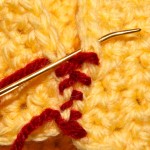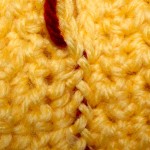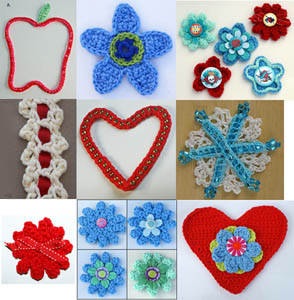The MATTRESS STITCH or WEAVING STITCH is a very nice joining method especially for garments because it is virtually invisible. When joining with this stitch, you have your right sides facing you, side by side. Insert your needle through both loops on both pieces at the bottom edge, leaving about a 4″ tail, repeat again in the same stitch to help secure your thread. Push your needle through both edge loops on the right side of the seam. Pull the yarn through loosely. Now insert the needle through both edge loops of the matching stitch on the left side. Remember, to always keep your tapestry needle facing to the top of your piece and not to the side. Continue alternating the joining stitches until you get to the end of your seam. After completing about 3 stitches, pull your yarn snug and continue joining.
This stitch is a little harder to do with crochet stitches because you don’t have a cross-bar stitch like in knitting. It is similar to doing a blind stitch in sewing. As you can see from my pictures though, you form little “x’s” when you pull up your joining stitch snuggly and it is virtually invisible. I used a very dark contrasting yarn for demonstration purposes but using your matching yarn, the joining seam will disappear.
Joining seams for your crochet projects is really a simple procedure. Take your time and decide upon which joining method you prefer and will work the best for your finished piece. Remember to weave in all your loose yarn tails too!
Spend some time with a youngster who might be interested in making crochet squares, and work together joining them into a cute baby doll blanket or a small coverlet to curl up with in the car or for reading books. Who doesn’t like something handmade!!
HAPPY CREATING!!
Disclaimer: This post contains affiliate links – “small commission earned”



